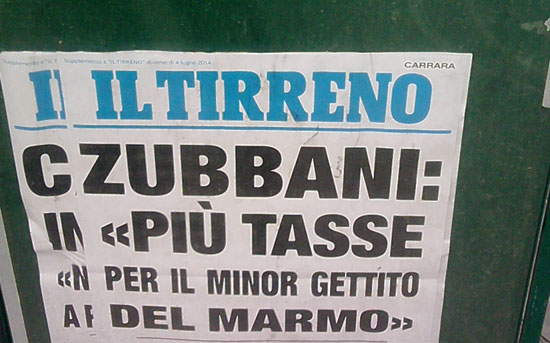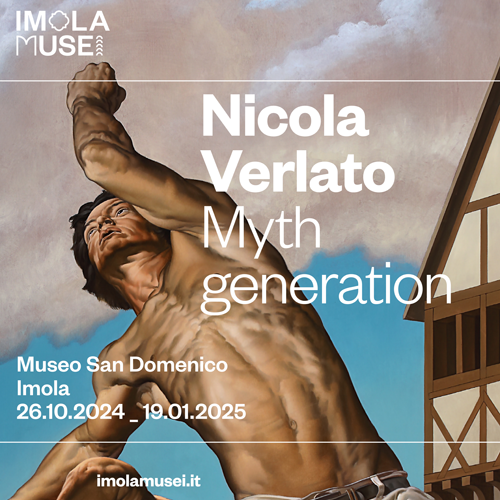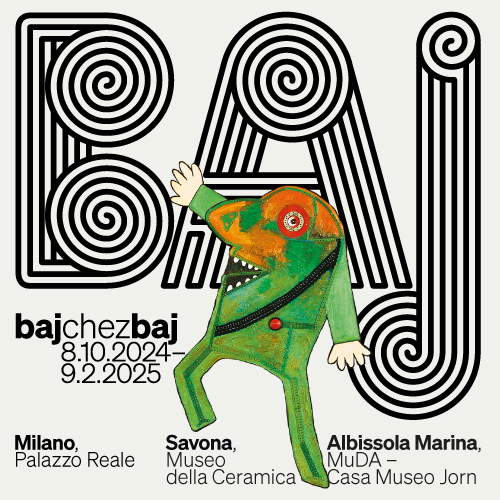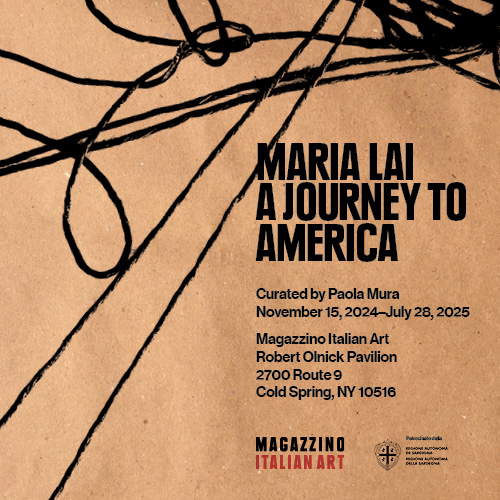Carrara: art that pleases the bosses. And the mayor who stands with them, to the detriment of citizens
A few days ago I told you about the forgettable exhibition that was organized by theAcademy of Fine Arts in Carrara as part of Marble Weeks. It is worth devoting a post precisely to Marble Weeks, which is considered the most important Carrara art review of the year. And indeed it is, because it is the art review that lasts the longest and manages to attract the most audiences. That is, if we want to evaluate the importance of an event in quantitative terms.
But if we want to assess importance on the qualitative side, there would be much to think about. It really makes one think that the website presents, immediately after the general information about the event, the link to the page with the marble companies. Link that comes even before the one dedicated to the exhibitions. Perhaps that the marble companies are more important than the exhibitions? It would seem so, judging also from the panels accompanying the works displayed for the city: the name of the company that supplied the marble comes before the name of the artist. We said this in the post about the exhibition at the Accademia: it is as if at the Accademia Gallery in Florence, someone had the nice idea of placing a sign next to the David that says"DAVID - Marmi Cava di Fantiscritti - Artist: Michelangelo."
And that it is an art that appeals to the marble companies, to the quarry owners who are doing little or nothing to curb the environmental havoc and employment ha voc in and around Carrara, is also noticeable by looking at the works scattered around the city. One has the feeling of seeing art that has nothing to say, that often smacks of pure decorativism, that repeats itself: even the tribute to the four hundred and fiftieth anniversary of Michelangelo Buonarroti ’s death did not go beyond the tired and vacuous repetition of the usual Michelangelo Pietà. Or rather, copies: because of course, despite the title taken from a verse by Michelangelo, A sculpir qui cose divine, there is nothing in the exhibition that was made by the hand of the great Renaissance artist. Nor, frankly, can one get enough of the Michelangelo rhetoric used to justify marble quarrying: moreover, only a tiny percentage of the marble quarried is used for artistic purposes.
It is in essence an advertising review: there is no work that is not presented by a marble company, and there is no newspaper article devoted to the review that does not mention at least one company. Indeed, there are articles in which the list of companies is presented and not the list of artists who participated. Another proof that the marble masters, in the end, matter more than the artists. And, predictably, no work that makes the slightest reference to the destruction of the Apuan Alps. Even though there are artists in town who are talking about it and would like to talk about it. One example? Robo and Romeo Buffoni’s installation provocatively set up at the beginning of Marble Weeks, and promptly removed by the authorities. Better that the people of Carrara do not reflect: their job is to celebrate the masters of marble and tell relatives or friends at the bar, on the beach, at work, “how beautiful Marble Weeks is this year.”
And what do the institutions do? We have always heard that institutions should promote culture, that they should be on the side of the citizens they represent, that they should break down barriers, stimulate dialogues and discussions, even on the most difficult issues. Such as, precisely, the issue of marble quarries and the damage they are doing to the environment and to employment(here is a link for those who want to learn more about it). The answer is simple: the institutions do nothing. Or rather: they promote Marble Weeks and hypothesize measures that are detrimental to citizens in order to safeguard the interests of the marble masters.
Some articles that have come out in the Tirreno in recent days cannot be explained any other way. But let’s go in order. On Friday, July 4, the Tirreno newspaper’s poster carried a quote from Angelo Zubbani, mayor of Carrara: “More taxes for lower marble revenue.” In theinterview published by the newspaper, the mayor explained in fact that in order to make up for the 8 million euros (between 2012 and 2013) that the municipality’s budget is lacking, a maneuver will have to be adopted that “consists of a tax tightening on citizens” and that “will concern Tasi and Irpef.” Statements that come in the midst of an investigation into the black economy at the quarries: even, in the fall it was speculated that the controls would bring in more revenue for the municipality. However, we wonder: but if the investigations were to establish that blackness at the quarries is a reality and not just an assumption, why should citizens be the ones to pay?

But that is not all. Just two days after the publication of the interview, again the Tirreno ran an article with data on the 2013 budgets of the"statuary bigwigs" ( statuary is the most valuable type of marble), which spoke of “record budgets” and increases in turnover in double-digit percentages. So if a citizen of Carrara feels slightly mocked by his mayor’s statements, he may have a point. But indignation is not a common feeling in Carrara, so the mayor will remain in his post despite his willingness to tighten citizens’ taxes, and this despite the investigation into black-marking at the quarries and despite the increases in turnover (and, incidentally, one wonders where the socialism of a mayor who belongs to the PSI has gone). After such statements, the call for his resignation should have automatically gone out from the whole citizenry, united. But this was not the case: evidently my fellow citizens like to pay more taxes to avoid touching the interests of the marble masters. I hope, however, that then no one will complain about the mayor anymore, and say that everything is fine in Carrara.
And maybe, many of my fellow citizens will even be happy about the masters’ Marble Weeks. “It beautifies the city,” they say. Maybe: personal taste is not up for debate. “And it brings people downtown,” they say. Maybe, though the economic spillover should be evaluated. Certainly the cultural spin-offs are minimal. It is, in fact, a publicity event. In fact, I’ll let you in on a secret: it is Mayor Zubbani himself who has admitted it. In the above interview, the reporter’s last question was “can the presence of marble companies in initiatives like Marble Weeks and others bring the quarries closer to the city?” The mayor’s answer? Here it is: "Good initiatives are welcome, but spot actions are not enough to salve all consciences." Is there any need for further confirmation?
Warning: the translation into English of the original Italian article was created using automatic tools. We undertake to review all articles, but we do not guarantee the total absence of inaccuracies in the translation due to the program. You can find the original by clicking on the ITA button. If you find any mistake,please contact us.





























